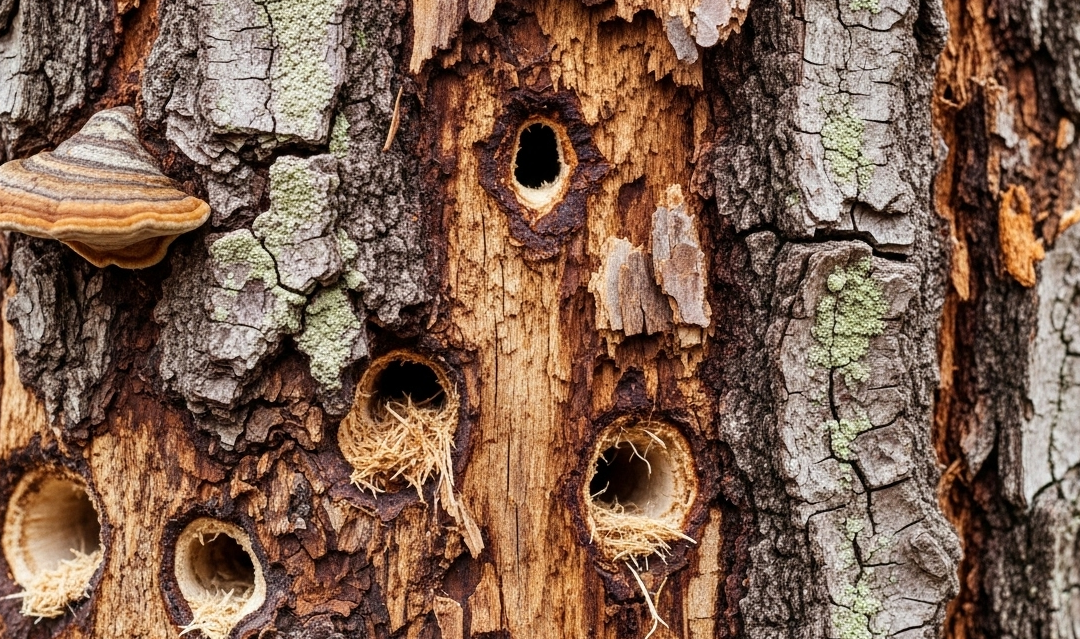Trees represent a valuable asset for any property; however, they are perpetually at risk from more than just storms and detrimental insects—they are also susceptible to diseases. In contrast to an insect infestation, tree diseases frequently remain undetected until considerable damage has taken place. Timely identification is essential for preserving your tree and halting the spread of infection.
Why Diseases Require Special Attention
Here are three common indicators that your tree may be suffering from a disease:
1. Cankers and Dieback:
-
Cankers are sunken, dead areas on the bark of a branch or trunk. They are often caused by fungi and can girdle a branch, cutting off the flow of nutrients and water, leading to dieback (the progressive death of twigs and branches starting at the tips).
-
What to look for: Dark, discolored, or cracking patches of bark, often with a raised edge where the tree is trying to wall off the infection.
2. Leaf Spots and Blights (Foliage Issues):
-
Many fungal diseases, such as Anthracnose or Leaf Spot, start as small, discolored spots on the leaves. These spots can merge, leading to premature leaf drop.
-
What to look for: Brown, black, or red spots on leaves; sudden yellowing or wilting in the summer; or a white, powdery coating (Powdery Mildew) on the leaf surface.
3. Fruiting Bodies (Fungus/Mushrooms):
-
The most obvious sign of an advanced fungal infection, especially in the roots or trunk, is the appearance of mushrooms, shelf fungi, or other “fruiting bodies.” These are indicators that the organism responsible for the decay is reproducing.
-
What to look for: Clusters of fungi growing at the base of the trunk or on the tree itself. This often signals internal wood decay and can be a significant hazard sign.
Your Next Step: When to Call the Experts
While homeowners can manage minor issues like mild leaf spot with improved watering techniques and sanitation (raking up fallen leaves), advanced diseases are best left to professionals.
-
Consult a certified arborist immediately if you notice:
-
Large cankers on the main trunk.
-
Significant dieback (more than 25% of the crown).
-
Mushrooms or shelf fungi growing on the trunk or near the root flare.
-
Any sign of decay that you suspect is compromising the tree’s structural integrity.
-
Ignoring a tree disease can lead to structural failure, property damage, or the spread of the infection to other valuable trees in your landscape. Regular inspection and professional intervention are the keys to a healthy, vibrant garden.
Conclusion
A holistic approach to tree and garden maintenance is vital, moving beyond common tasks like watering and pest control to address less obvious, yet serious, threats such as tree diseases. While routine care covers visible issues, the integrity of your landscape depends on recognizing the “silent killers” like cankers, leaf spots, and fungal bodies, which signal deep-seated health issues. By staying informed and knowing the critical moment to call in a certified arborist for professional diagnosis and intervention, you ensure the structural safety, health, and lasting beauty of your trees, preserving your valuable natural assets.

